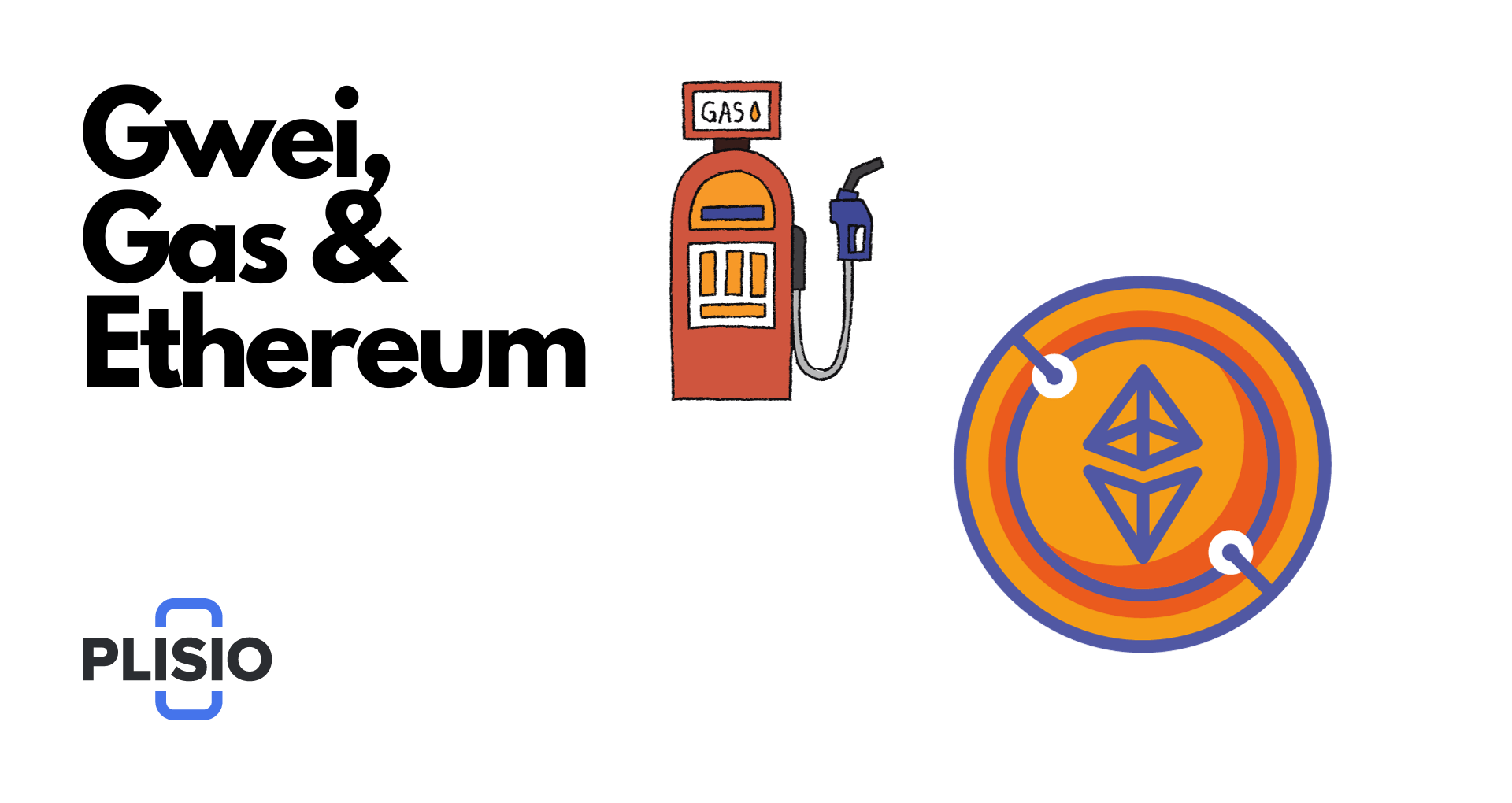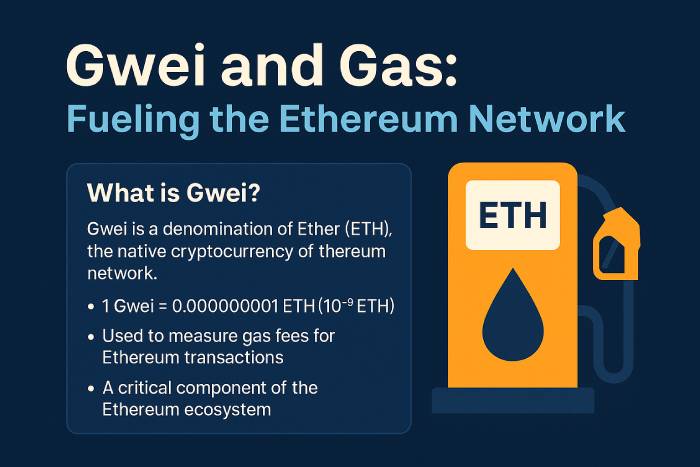Gwei and Gas: Fueling the Ethereum Network

Similar to traditional fiat currencies, a myriad of cryptocurrencies also have the ability to be divided into subunits. Among these, the Ethereum blockchain is distinctive as it encompasses various denominations of its native currency, Ether (ETH). The most pivotal of these denominations is Gwei, serving as the measure for the network’s transaction fees, also known as Ethereum gas fees.
Gwei is integral to the Ethereum network, a blockchain platform renowned for its smart contract functionality, enabling the development of decentralized applications (DApps). Given the vast array of projects and applications constructed on the Ethereum blockchain, having an understanding of Gwei is crucial. This is especially true for those engaging with the platform, as they may encounter the necessity to pay a transaction fee denominated in Gwei.
What is Gwei?
Gwei serves as a fundamental denomination of Ether (ETH), the intrinsic cryptocurrency of the Ethereum network, facilitating a more manageable representation of smaller fractions of ETH in transactions and network fees. Gwei, short for gigawei, embodies the convergence of "giga" representing one billion, and Wei, the smallest fraction of Ether, making 1 Gwei equivalent to one billion Wei or 0.000000001 ETH.
In practical terms, Gwei is the standard unit for measuring gas fees—small amounts paid for each operation executed on the Ethereum blockchain. Whether transferring tokens, interacting with smart contracts, or performing computations, these fees on the Ethereum network are more effectively communicated in Gwei, making cost calculations clearer and more accessible.
Gwei is exclusive to Ethereum and does not apply to other blockchain currencies. This specificity underscores its importance in understanding the Ethereum ecosystem’s fee structure. As Ethereum usage continues to grow, a working knowledge of Gwei has become essential for anyone operating within the ecosystem.
Also known as "shannon" in tribute to Claude Shannon, a founding figure in information theory, Gwei carries symbolic weight in its naming, further embedding the Ethereum network in the broader history of digital innovation.

Encountering Gwei in Ethereum Transactions
If you've ever transferred crypto assets or interacted with a DApp and checked the Ethereum transaction details, you've likely seen the term "Gwei." It may seem like a minor technical detail, but in reality, it's central to how fees are calculated and transactions are prioritized on Ethereum.
Gwei plays a vital role in powering the Ethereum Virtual Machine (EVM), which executes smart contracts and processes network activity. Validators—those who confirm transactions and secure the blockchain—are compensated with gas fees paid in Gwei. The more complex the task, the more Gwei is required, depending on the amount of gas consumed.
As of 2025, the average Ethereum gas price is approximately 4.97 Gwei, while the average transaction fee on the network hovers around 0.0002 ETH (or roughly $0.53 USD). These figures mark a significant improvement in affordability and efficiency compared to prior years, reflecting the success of scalability upgrades like Ethereum 2.0 and Layer 2 rollups.
According to Ansgar Dietrichs, researcher at the Ethereum Foundation, “The introduction of EIP-1559 and the transition to Proof-of-Stake were pivotal in reducing transaction fee volatility. Gwei as a pricing unit remains essential to ensure transparency and fairness in the network’s economy.”
The Role of Gwei in Ethereum
At the core of Ethereum’s operational model is the concept of gas, and Gwei serves as the denomination by which gas is priced. Every Ethereum transaction or interaction on the Ethereum network requires computational power, and the cost for that power is calculated in Gwei per unit of gas.
The gas fee mechanism ensures fair compensation for validators who confirm and add transactions to the blockchain. The amount of gas required depends on the complexity of the transaction. More demanding tasks—such as executing smart contracts or calling multiple functions—consume more gas, and consequently, require more Gwei.
This system allows users to influence the speed of their transactions. By setting a higher gas price in Gwei, users can prioritize their operations during congested periods, while a lower price may result in slower confirmations or failed transactions.
Understanding and Calculating Gwei
Gwei is a practical unit on Ethereum, crucial to calculate gas fees. The total cost of a transaction is determined by three components:
- Gas Limit: The maximum units of gas a user is willing to spend.
- Gas Price: The price per unit of gas, measured in Gwei.
- Total Fee: The final transaction fee, computed as Gas Limit × Gas Price.
To calculate gas fees:
- Estimate the Gas Limit: This depends on the type of transaction. A simple ETH transfer might need around 21,000 units, while complex smart contracts require more.
- Set the Gas Price: Choose a rate in Gwei depending on current network congestion. Tools like Etherscan show the average gas price.
- Multiply: Multiply the gas limit by the gas price. For example, 50,000 gas × 100 Gwei = 5,000,000 Gwei.
- Convert to ETH: Since 1 ETH equals 1,000,000,000 Gwei, divide by one billion to get the fee in ETH.
Example: For an ERC-20 token transfer with a gas limit of 65,000 and a base price of 118 Gwei:
65,000 × 118 Gwei = 7,670,000 Gwei = 0.00767 ETH.
Extra Notes:
- Tips in Gwei can help prioritize transactions.
- Gwei values fluctuate, so tracking real-time gas prices helps optimize costs.
Gwei in the Context of MEV and Gas Optimization
Gwei is also central to strategies involving Maximal Extractable Value (MEV). In Proof-of-Stake, validators have control over block order, and searchers use algorithms to identify opportunities. These transactions are optimized by minimizing the amount of gas and maximizing the amount of Gwei used for fees.
Practices like Gas Golfing help searchers reduce gas use and allocate more Gwei to attract validators. While this can lead to front-running and network congestion, it also shows how Gwei plays into transaction competition.
Vitalik Buterin, Ethereum co-founder, noted in a recent talk: “As we optimize for scalability, Gwei continues to serve as a practical and flexible measure to ensure that fees align with resource usage. It's a core part of Ethereum’s economic model.”
Ether Denominations: A System for Precision
The Ethereum ecosystem uses denominations of Ether for flexibility:
- Wei: The smallest unit.
- Kwei, Mwei, Gwei, Twei, Pwei: Scaling units up to 1 ETH.
- 1 Gwei = 0.000000001 ETH.
These units simplify fee precision, allowing micro and macro transactions across the Ethereum blockchain.
Conclusion
Understanding Gwei, gas fees, and gas price enables users to manage transaction fees more effectively on the Ethereum network. With knowledge of how to calculate gas fees and set the right amount of Gwei per unit of gas, users can optimize their experience across the Ethereum ecosystem. As Ethereum continues to scale, the role of Gwei in enabling efficient and affordable transactions remains fundamental.
As blockchain consultant Laura Shin commented, “Knowing how Gwei works is no longer just for developers—it’s essential knowledge for any serious user in the Web3 space.”




